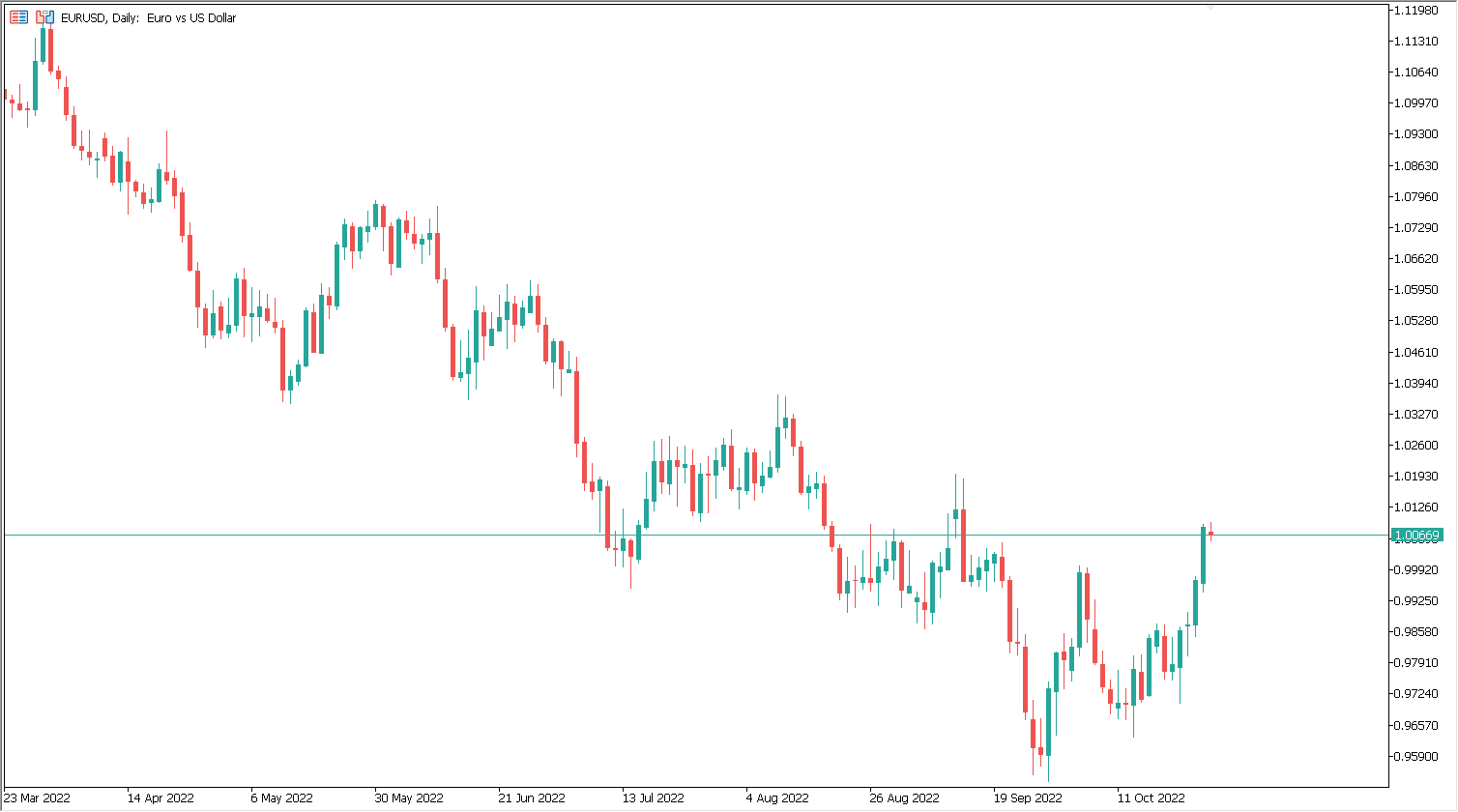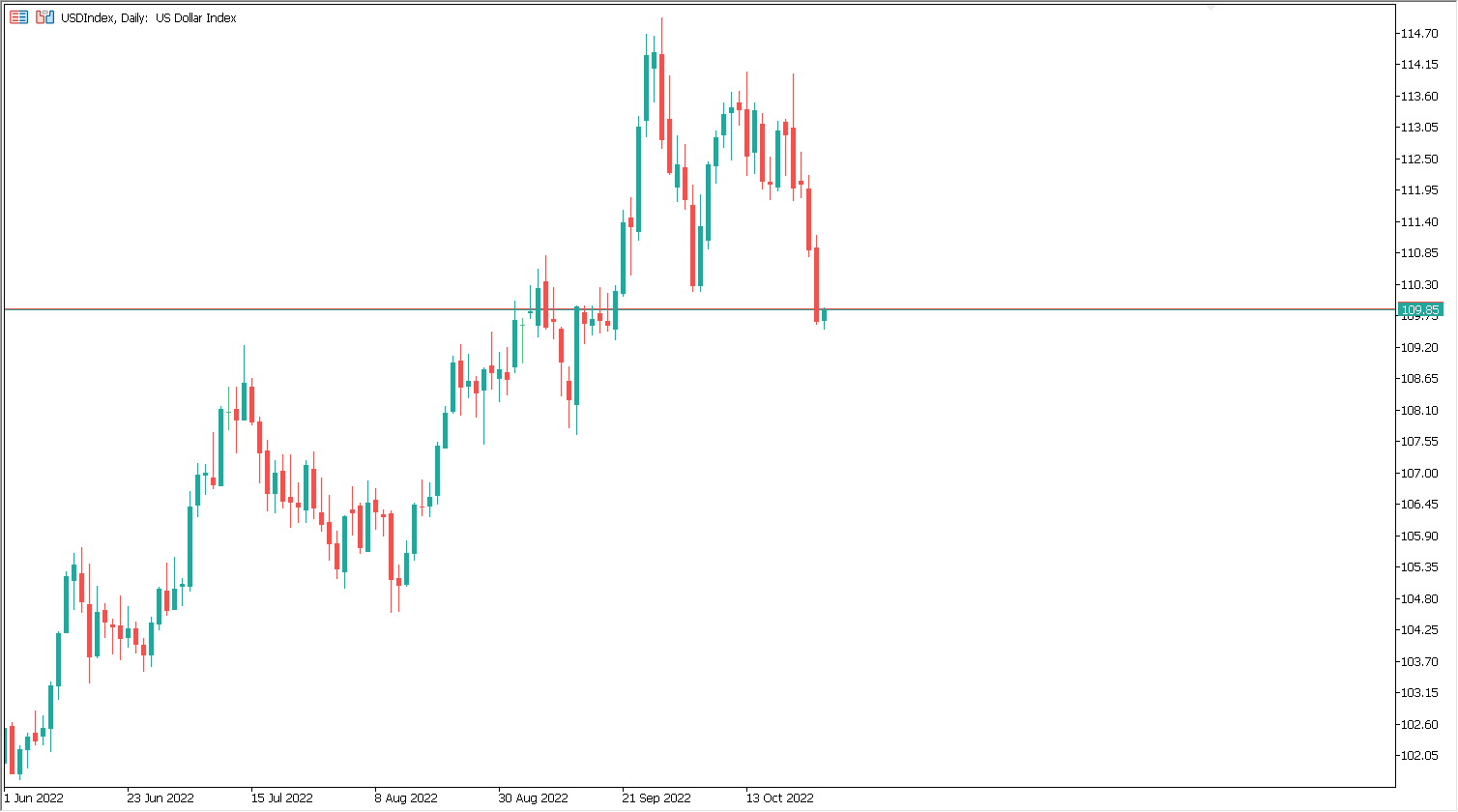Today, the European Central Bank is likely to decide whether to raise interest rates, and may also address what to do next regarding the bank's balance sheet total. The main question may be when the ECB would want to start reducing it.
Possible ECB decisions
At this point, the basic scenario could be a 0.75 percentage point increase in interest rates, to 1.5 percent on the deposit rate. Due to high inflation, further rate hikes are possible to be needed, as the ECB may indicate in its announcement. The pace of increases may depend on incoming data. This may be accompanied by a negative outlook on the eurozone economy with downward risks directed at GDP, which may be expressed by Christine Lagarde during the press conference. Added to this is the aforementioned topic of balance sheet reduction. Here, the ECB may have a difficult task to avoid a rapid increase in the profitability of southern European countries.
Hence, the central bank's actions may be measured and staggered. It is currently expected that after the first quarter of 2023, the ECB may decide to act to tighten monetary policy even further, by selling bonds. Accelerating this process could be perceived, as a more hawkish signal, while postponing it to, say, the second half of 2023, as dovish. In addition, there is also the pace for further increases. Yesterday, the Bank of Canada decided on a smaller rate hike, as by 0.5 percentage points, rather than 0.75, as the market had expected. Nevertheless, the Bank of Canada stressed that it will continue quantitative tightening (QT).

Source: Conotoxia MT5, EUR/USD, Daily
Euro exchange rate ahead of ECB. An interest rate hike?
Yesterday, the euro exchange rate rose above $1.0000. Today, if the interest rate hike turns out to be in line with expectations, the EUR/USD pair's exchange rate could remain stable and move in the $0.9950-$1.0050 area, waiting for the Fed decision, which will be announced on November 2. However, there could be other factors that significantly affect the exchange rate, such as data on the change in the central bank's balance sheet. If there are hints of a quantitative tightening program and balance sheet reduction, this could be a supportive factor for the euro.
On the other hand, the ECB has the TPI (Transmission Protection Instrument) tool in store. Its implementation could mean selective quantitative easing to reduce bond spreads in the European market. In past weeks, Italy's bond spreads against Germany's bonds have widened to the highest level since June 2019. The use of this tool or the announcement of such an action could weaken the euro toward $0.98.
Other important macroeconomic data
In addition to the ECB decision today at 2:15 pm (GMT+2) and the press conference starting at 2:45 pm (GMT+2), the market may be waiting for US GDP and core PCE inflation data. The market consensus is that U.S. GDP grew by 2.1 percent in annualized terms in Q3, while core PCE inflation fell from 4.7 percent in Q2 to 4.6 percent in Q3. Why might these data be important? It seems that the market in recent days has begun to gamble on an easing of the US interest rate hike cycle due to a weakening industrial and real estate market. In turn, high inflation and still solid economic growth could change market participants' attitudes again, in which case the current USD weakness could possibly turn out to be just a correction. Meanwhile, weaker data from the US could seal the Fed's pivot and slower rate hikes in the near future.

Source: Conotoxia MT5, USDIndex, Daily
Daniel Kostecki, Director of the Polish branch of Conotoxia Ltd. (Conotoxia investment service)
Read more reviews and open a demo account at invest.conotoxia.com
Materials, analysis and opinions contained, referenced or provided herein are intended solely for informational and educational purposes. Personal opinion of the author does not represent and should not be constructed as a statement or an investment advice made by Conotoxia Ltd. All indiscriminate reliance on illustrative or informational materials may lead to losses. Past performance is not a reliable indicator of future results.
CFDs are complex instruments and come with a high risk of losing money rapidly due to leverage. 75,21% of retail investor accounts lose money when trading CFDs with this provider. You should consider whether you understand how CFDs work and whether you can afford to take the high risk of losing your money.



